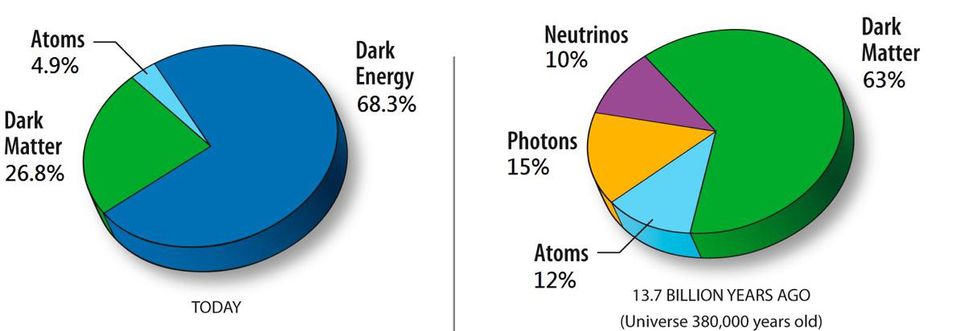
 Credit: NASA/WMAP Science Team
Credit: NASA/WMAP Science Team
The CNB
The Universe we live in wasn't always the cold, dark-energy and matter dominated realm we live in today. In earlier times, the Universe was much hotter and denser. Just after the Big Bang, temperatures and densities were as high as you'd find at the center of a star. These conditions squeezed protons together to form helium nuclei, leaving behind nearly all of the hydrogen and helium we see around us today. We know much of this through the detailed study of the cosmic microwave background, the radiation generated at the instant when the Universe became almost transparent, about 380,000 years after the Big Bang. This energetic radiation, subsequently stretched by the expansion of the Universe into the lower-energy microwave band, carries the imprint of conditions from the very early history of the Universe. But this cosmic microwave background is not the only significant cosmic background. At early times, the Universe was awash not only in radiation, but also tiny subatomic particles called neutrinos, which are produced when subatomic particles interact. Neutrinos rarely interact with matter, have a tiny bit of mass, and travel at the speed of light. They are so hard to detect that it takes a detector the size of Antarctica to find neutrinos streaming to us from the deep cosmos. But the presence of neutrinos had a significant effect on the structure of the Universe at its formation. Astronomers have recently confirmed this tiny effect by carefully studying small temperature variations in the global map of the microwave background, and through careful studies of galaxy distributions in the distant Universe. Although this cosmic neutrino background is negligible today, it once contained about 10% of the energy in the Universe.
Published: March 11, 2019
<
HEA Dictionary ● Archive
● Search HEAPOW
● Other Languages
● HEAPOW on Facebook
● Download all Images
● Education ● HEAD
>

Each week the HEASARC
brings you new, exciting and beautiful images from X-ray and Gamma ray
astronomy. Check back each week and be sure to check out the HEAPOW archive!
Page Author: Dr. Michael F. Corcoran
Last modified Monday, 26-Feb-2024 17:34:42 EST


